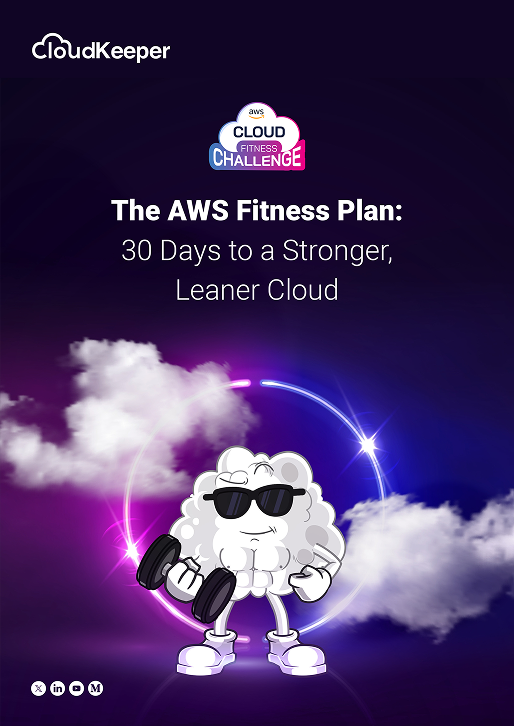In today's digital age, businesses are increasingly leveraging cloud computing to drive innovation and agility. However, amidst the myriad benefits lie the complexities of managing cloud costs effectively. Recognizing this challenge, CloudKeeper organized FinOps Accelerate, a panel discussion series aimed at addressing common pitfalls in FinOps adoption and strategies to overcome them. In this chapter, we delve into the fumbles encountered in cloud FinOps adoption and how to navigate them successfully. Held on April 16, 2024, the event brought together industry experts and practitioners to explore key themes shaping the landscape of cloud FinOps.
Top Four Mistakes in FinOps Adoption
The discussion dives into four critical subtopics:
Fumbles in equating FinOps solely with cloud cost reduction, overlooking its broader scope:
Many firms make the mistake of ignoring the wider use of FinOps and instead equate it only with cloud cost reduction. This limited viewpoint frequently results in lost chances for innovation and optimization in cloud resource management.
Fumbles in collaboration amongst teams:
A frequent cause of failure in FinOps adoption is the absence of coordination between the development, operations, and finance teams. Organizations find it difficult to maximize the value of their cloud investments and optimize cloud expenditures in the absence of cross-functional alignment.
Fumbles in setting the right KPIs for FinOps implementation and tracking them:
Setting the right KPIs for FinOps implementation and effectively tracking them can be a challenge. Many organizations tend to solely focus on cost reduction metrics, overlooking vital aspects such as resource usage, performance efficiency, and overall business impact. As a result, there's often a mismatch of Key Performance Indicators (KPIs), leading to ineffective tracking and decision-making.
Fumbles in choosing the right FinOps tools and processes:
The process of choosing FinOps tools and technologies that are appropriate for their particular needs presents difficulties for many organizations. This can ultimately impede the efficiency of cloud cost optimization initiatives by causing scalability problems, and challenges in incorporating FinOps principles into current workflows.
Speakers of the Panel Discussion
The panel discussion was joined by distinguished speakers, each bringing their unique expertise to the conversation.
- Vasilio (Vas) M., FinOps Principal at the FinOps Foundation, is renowned for his insights into cloud financial management and optimizing operational efficiencies.
- Deepak Mittal, CEO & Co-founder at CloudKeeper, and member of the Governing Board at FinOps Foundation brings a wealth of experience in cloud architecture and strategic planning, with a focus on driving business outcomes through technology.
- Brian McCumber, Cloud FinOps Leader at Tech Money Talks, is a recognized thought leader in cloud cost optimization and has spearheaded successful FinOps initiatives for various organizations. Let's delve into the valuable insights shared by these industry luminaries during the panel discussion.
The session was moderated by Saloni Phutela, Director of Marketing at CloudKeeper.
Key takeaways of the panel discussion
The discussion kicked off with the acknowledgment that many organizations prioritize immediate cloud cost savings when adopting FinOps, with a significant percentage focusing solely on this aspect. However, pigeonholing FinOps as a cost-cutting measure fails to recognize its potential to deliver maximum value beyond financial savings.
Emphasizing a shift from cloud cost reduction to value creation, panelists advocated aligning cloud spend with business goals for agility and innovation. Shared ownership and a nuanced understanding of cloud costs were highlighted for informed decisions. "Return on Cloud Spend" (ROCS) was introduced as a metric for measuring business value derived from cloud spending. A proactive approach focusing on long-term value creation and data-driven decision-making was emphasized. By embracing FinOps as a strategic framework, organizations can embark on a cloud cost optimization journey and drive business growth.
During the discussion on team collaboration, the panel addressed challenges hindering effective cloud cost management, citing lack of communication, goal misalignment, and siloed workflows as common issues. They stressed the need for teamwork, with panelists emphasizing that teams must collaborate and share ownership of cloud usage.
They underscored the need for a common language across various enterprise silos, essential for successful FinOps practices. The panel stressed the significance of executive buy-in, acknowledging leadership support as crucial for integrating FinOps principles into day-to-day activities. Practical strategies for enhancing team collaboration included establishing a common language, joint ownership of budgets, and real-time access to reports. Additionally, they advocated for involving engineering teams and defining clear roles for centralized and decentralized FinOps teams.
The conversation then delves into the critical aspect of setting and tracking Key Performance Indicators (KPIs) within FinOps initiatives. Speakers stress the necessity of aligning KPIs with evolving business needs and cloud maturity levels, advocating for a mindset of progress over perfection. They highlight the challenge organizations face in determining which metrics to prioritize and measure effectively. Initially, the focus may be on cost-saving metrics, gradually transitioning to unit metrics tied to specific business outcomes. Recommendations for companies starting their FinOps journey include a mix of rate optimization, usage, and architecture optimization metrics. Grouping KPIs into categories such as purchasing effectiveness, utilization optimization, and operational efficiency aids in prioritization. Moreover, tracking actions taken based on identified KPIs, and highlighting successes, is emphasized as crucial for maintaining momentum and garnering organizational support.
Continuing the discussion from the challenges of setting and tracking the right KPIs, the conversation shifts towards another critical aspect of FinOps implementation: selecting the appropriate tools and processes. Just as setting KPIs is pivotal to success, choosing the right tools is equally crucial.
Panelists emphasize the importance of assessing organizational needs and aligning tools with specific goals and objectives. They caution against the temptation to either build internal solutions or rely solely on single commercial tools. Instead, they advocate for a balanced approach, leveraging a mix of cloud-native, commercial, and internal tools. Key considerations include interoperability, flexibility, and the ability to curate data from various sources. Panelists also stressed the importance of building a tooling capability matrix to evaluate and select tools based on their strengths and alignment with organizational capabilities. Additionally, leveraging existing tools within the organization, such as Power BI, can provide a foundation for the initial visualization of KPIs. Ultimately, the conclusion was the choice of tools should be tailored to suit the unique needs and objectives of each organization.
Panelists emphasize the importance of assessing organizational needs and aligning tools with specific goals and objectives. They caution against the temptation to either build internal solutions or rely solely on single commercial tools. Instead, they advocate for a balanced approach, leveraging a mix of cloud-native, commercial, and internal tools. Key considerations include interoperability, flexibility, and the ability to curate data from various sources. Panelists also stressed the importance of building a tooling capability matrix to evaluate and select tools based on their strengths and alignment with organizational capabilities. Additionally, leveraging existing tools within the organization, such as Power BI, can provide a foundation for the initial visualization of KPIs. Ultimately, the conclusion was the choice of tools should be tailored to suit the unique needs and objectives of each organization.
In conclusion, navigating the challenges of FinOps implementation requires a nuanced approach, from understanding cloud maturity to setting the right KPIs and selecting appropriate tools. Our panel discussion sheds light on these complexities.
Watch the complete panel discussion here.
Interested in joining our next FinOps Accelerate? Sign up to our mailing list to stay informed about upcoming discussions and thought leadership series.

